The Joseon Scene: Arcades in Korea
Examining the arcade scene in a popular South Korean entertainment district

Standing over five stories in height, the retro-futuristic Daejeon Sky Bridge marks the center of one of the Korean city's major entertainment districts. The structure's belly is covered with LED panels that flash a musical show on a regular loop starting at six in the evening. It's a good introduction to the panache that Korea brings to amusement.
Both of Daejeon's entertainment districts are carefully positioned to capture a specific clientele. Each one is nestled among the university campuses that ring the city, and as such, they feature businesses meant to appeal to people in their late teens.
The businesses around and beneath the Sky Bridge include dozens of specialty cafes. Among them are Cafe SANAGO, home to a Korean artist with a major following; restaurants offering Korean and international fare; food stalls for those who prefer al fresco dining; self-serve photo studios ideal for the girl in need of the perfect profile picture, and a range of other amusements. Laser tag, bowling, escape rooms, roller skating rinks, KTV - you can find just about anything if you know where to look.
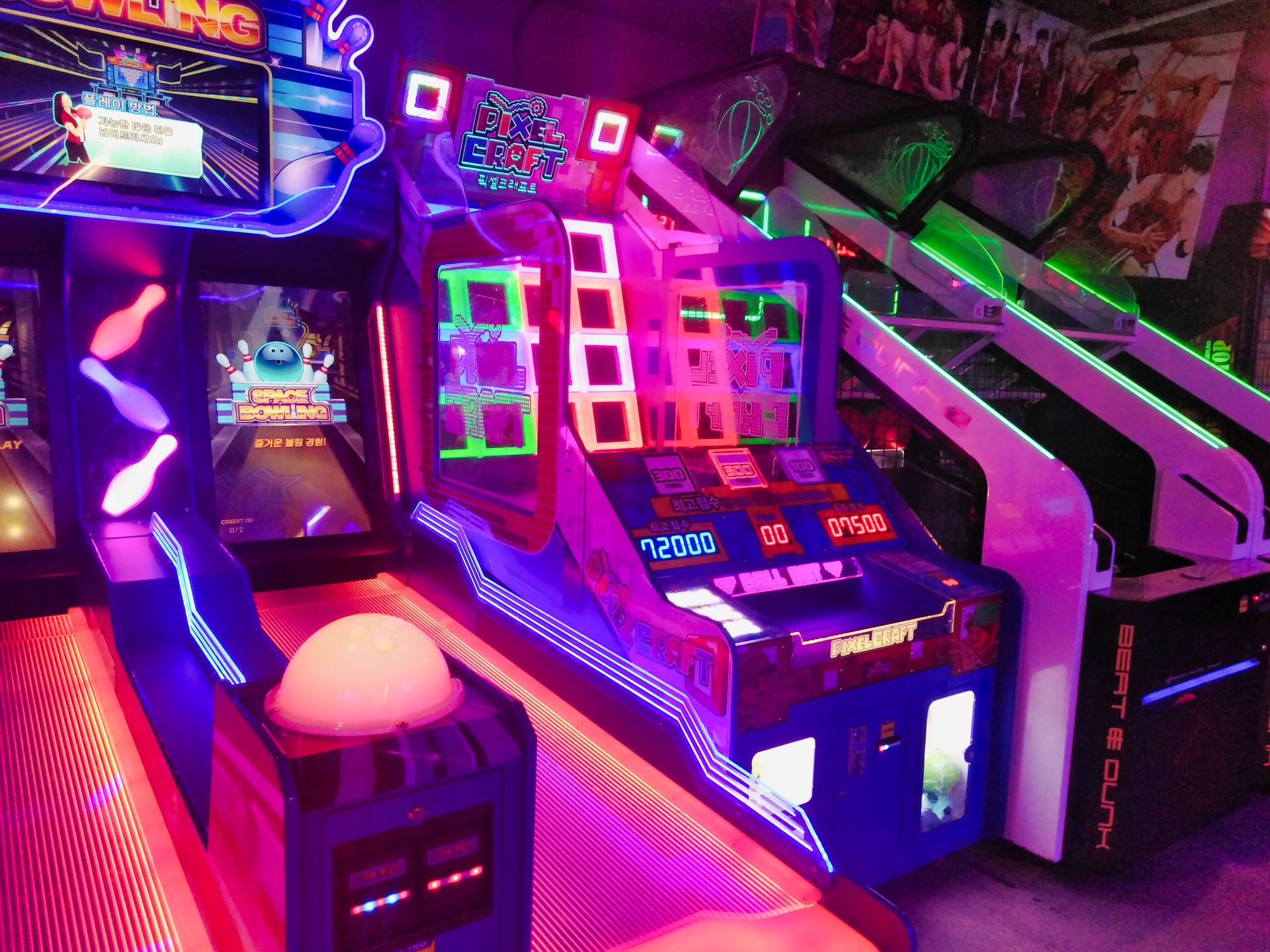
But for our purposes, the most interesting feature might be the arcades, at least a dozen of which are located in the Sky Bridge area. As with China, arcades are more important to socially-oriented Koreans than they ever were in most Western countries. The ubiquity speaks to that - I live in a business district and there's an arcade about two blocks away. These arcades also have a special character, one that can be seen in how they are decorated and arranged.
In many ways, the Korean arcade resembles the Chinese arcade, featuring the same VR cabinets (mostly based on Beat Saber), Neo-Geo emulation machines, rhythm games, and the same lack of pinball. However, there are a few noteworthy distinctions, though the biggest difference is the sheer number of them. To get the pictures for my article on Chinese arcades, I had to visit several parts of several cities. Everything you'll see below can be found in about a ten-block area.
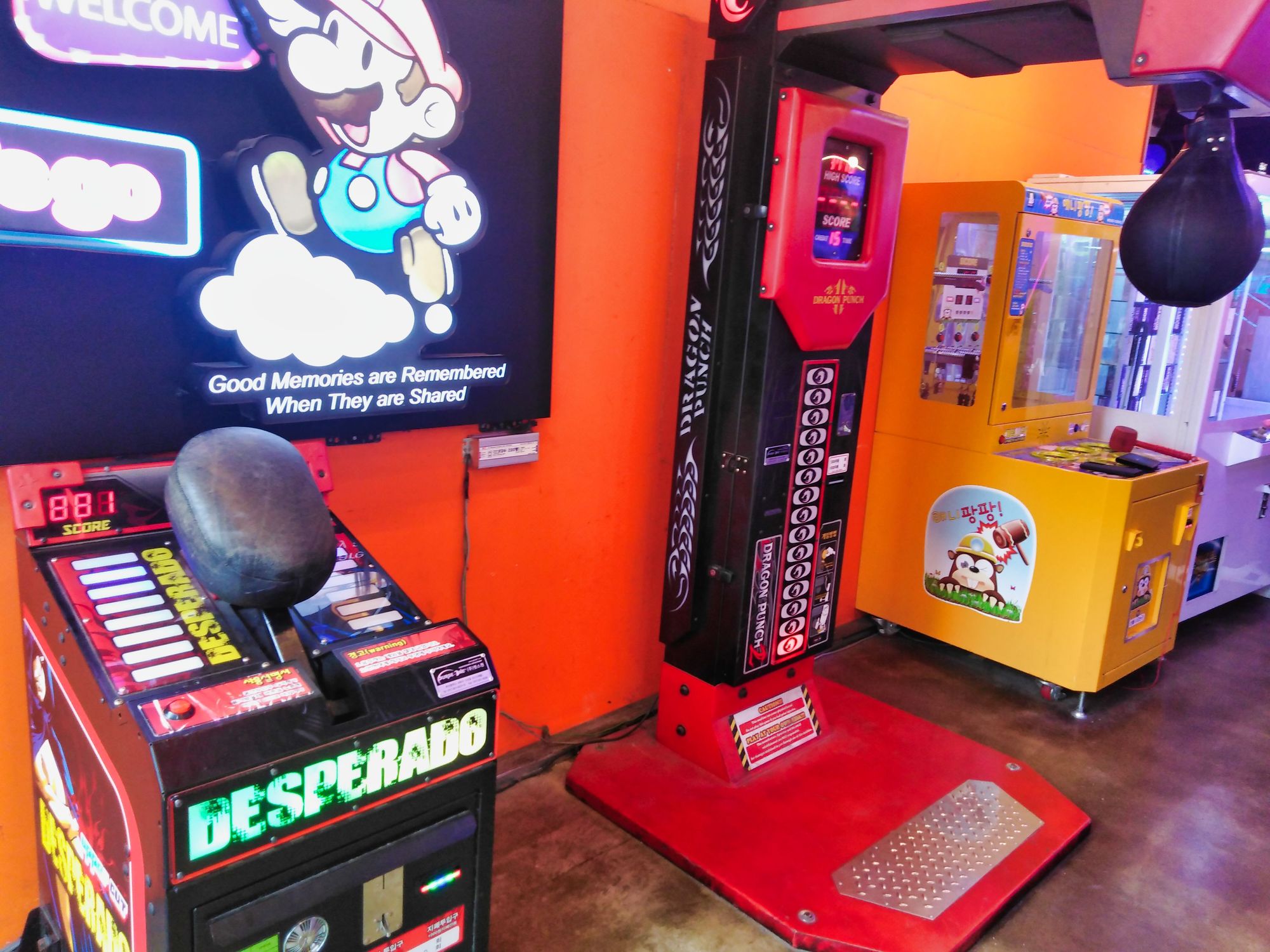
Strength testers
Strength testing machines have a long history in American bars, though they aren't as common as they once were. However, modern versions of these devices are a standard fixture in Korean arcades. There are two major varieties, both pictured above - one with a semi-fixed pad, the other resembling a speed bag (there are also less common versions in which the player boxes a dummy or kicks a soccer ball). Every full-sized arcade contains at least one of these, and most have both.
Often, the strength testers aren't in the arcade proper but located just inside the entrance or on the sidewalk flanking the main entrance. These devices are meant to be an initial draw, something to catch the attention of passers-by who might not otherwise think about going in. On a personal level, the ubiquity of the strength testers also makes it easy to find arcades in the first place.
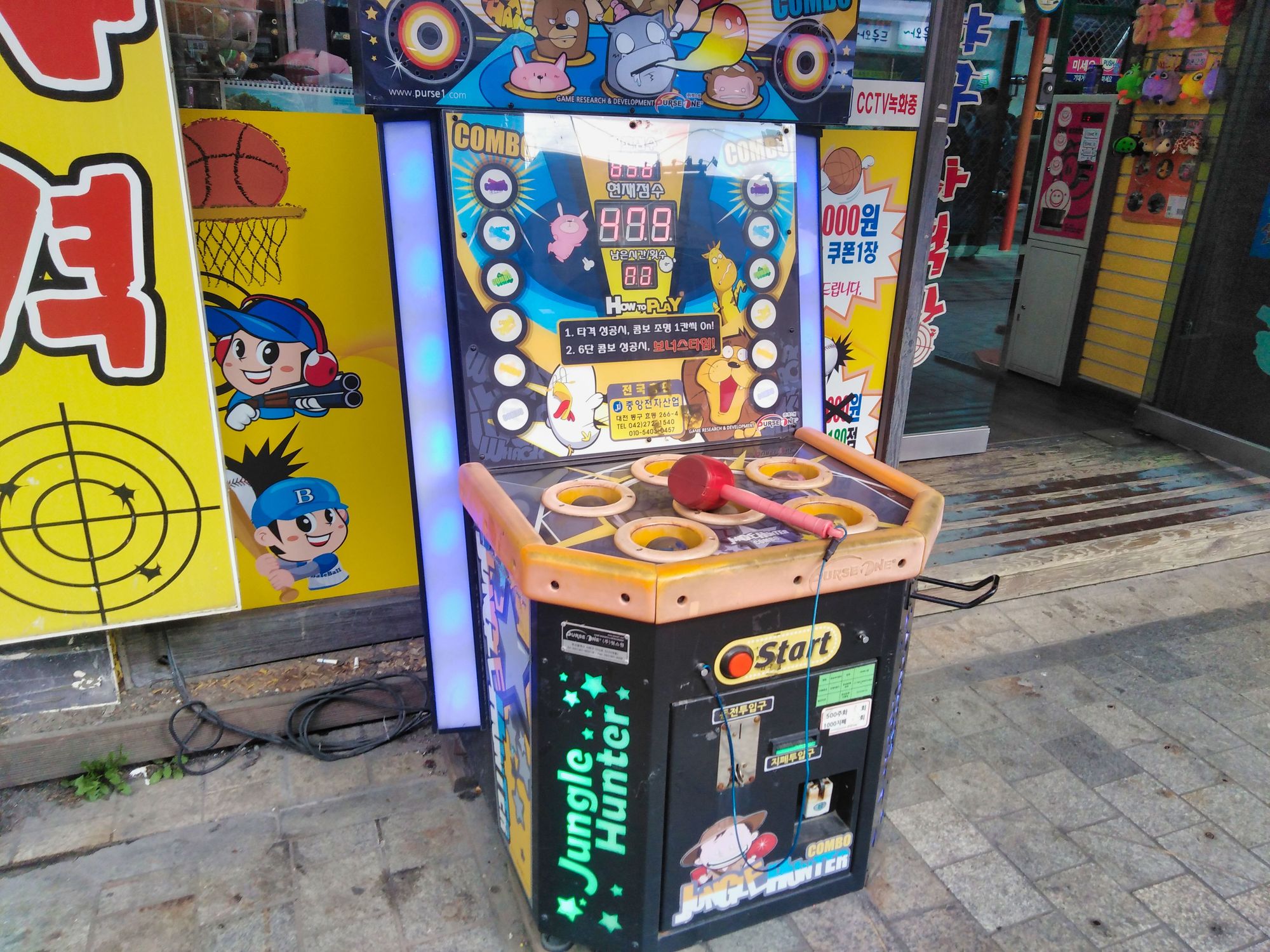
Whack-a-Mole
Speaking of old-school amusements, variants on the vintage midway attraction whack-a-mole are also a pretty common sight. The most common machines are small ones like the one pictured, and as with the strength testers these are often found outside of the arcade proper.
There are also larger, more sophisticated versions, including a very large multiplayer version - though I'm not sure if that one is meant to be cooperative or head-to-head.
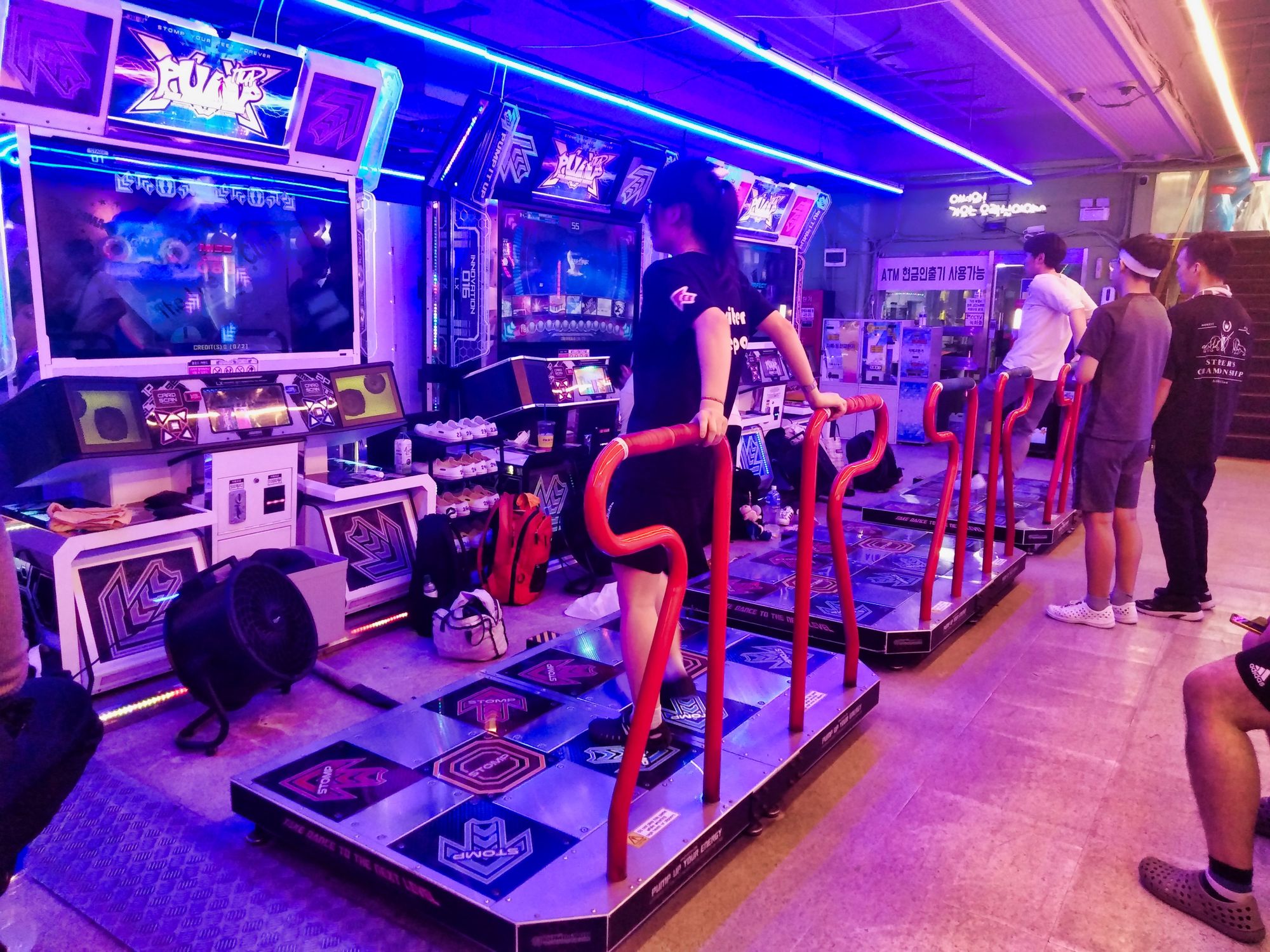
DDR and its clones
There's a bit of a stereotype about Koreans and Dance Dance Revolution, and there is some truth to it. The arcade phenomenon from years past remains very popular here today. Most of these machines aren't DDR branded, but rather belong to its descendants, competitors, and clones - most of the ones I encountered were branded Pump It Up, though the hardware is nearly identical to DDR.
DDR-like machines are not particularly common, but that's mostly down to the bulky machines being an uneasy fit in smaller arcades. Even so, some of those little pocket arcades decide to make it work, even if they have to dedicate a third of the floor space to the machines. Where they are found, they are easily the most popular games in the arcade.
Needless to say, this isn't the only rhythm game you'll encounter. I even discovered a low-profile arcade in another part of the city that contained only rhythm games, including a piano-based game that I'd never seen anywhere else.
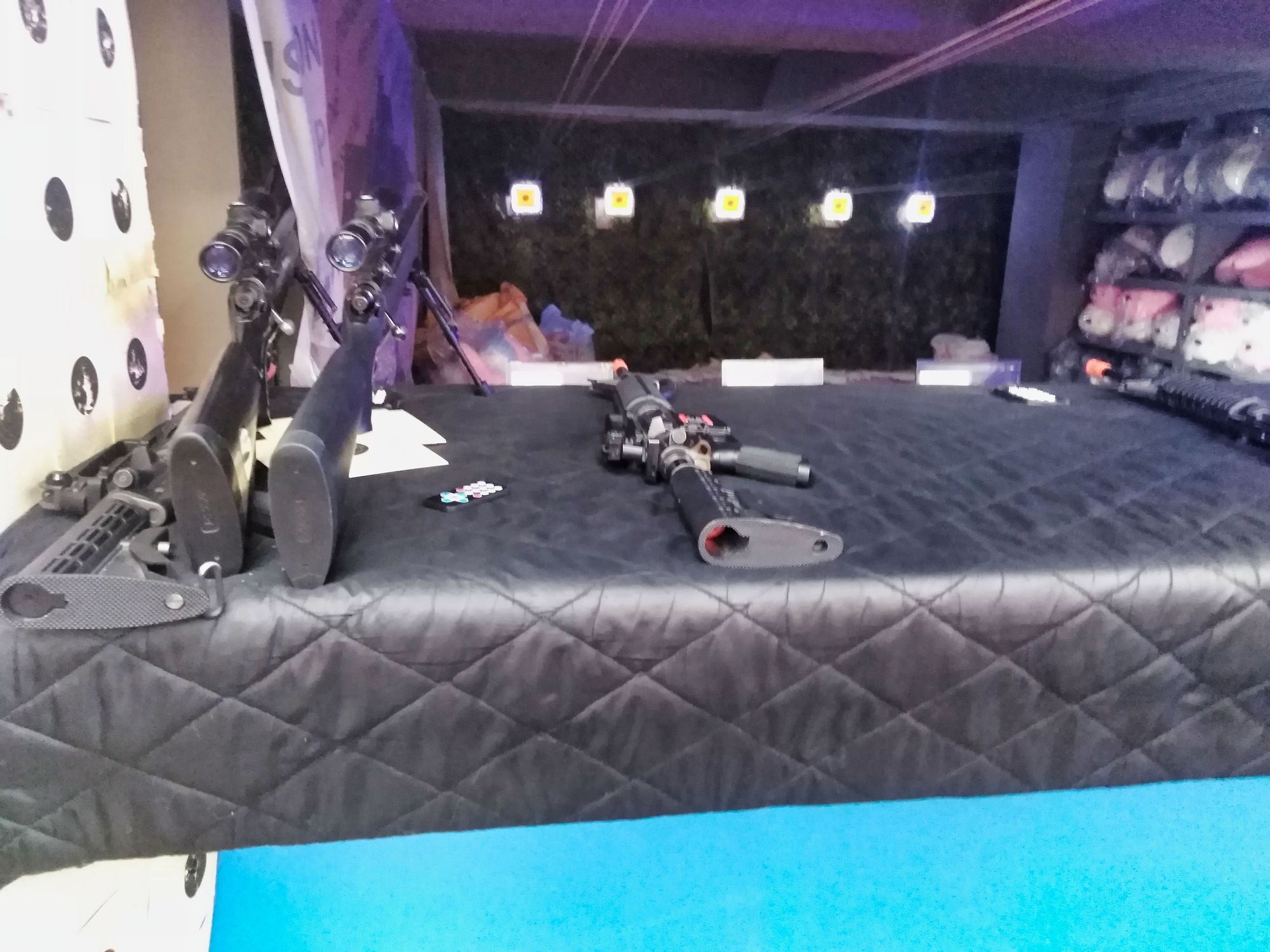
Shooting sports
An interesting subcategory here is the sports-themed arcade. These businesses forego some (in some cases all) of the conventional machines to dedicate space to batting cages, BB gun ranges, and archery ranges. Despite the space needed for any kind of shooting range, these seem to be quite popular.
While mainly found as part of larger, multi-floor facilities, I did find one small arcade that omitted almost all conventional games in favor of a BB gun range and batting cage.
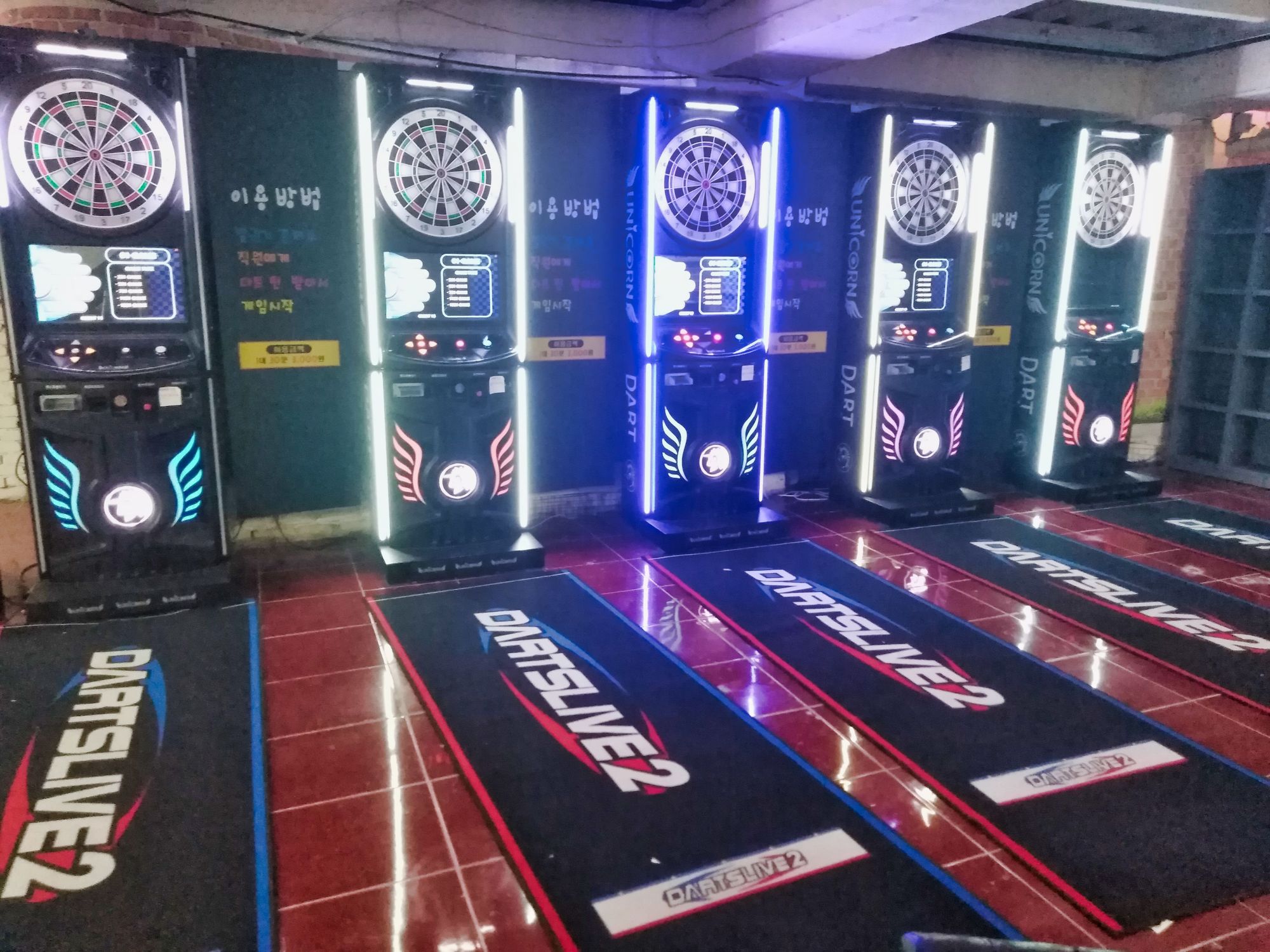
Electronic darts
Electronic dart machines are popular in bars (especially sports bars) due to their small size and their being less dangerous than actual darts, but I can't recall seeing them much in proper arcades. Nearly every Korean arcade I visited had a few of them, though, with this one dedicating a large part of the room to them. I suspect that this arrangement is for tournaments.
Despite being pretty common, darts isn't one of the more popular games, and I saw few people playing at any location. However, they do see more play in bars, particularly those that cater to American military personnel.
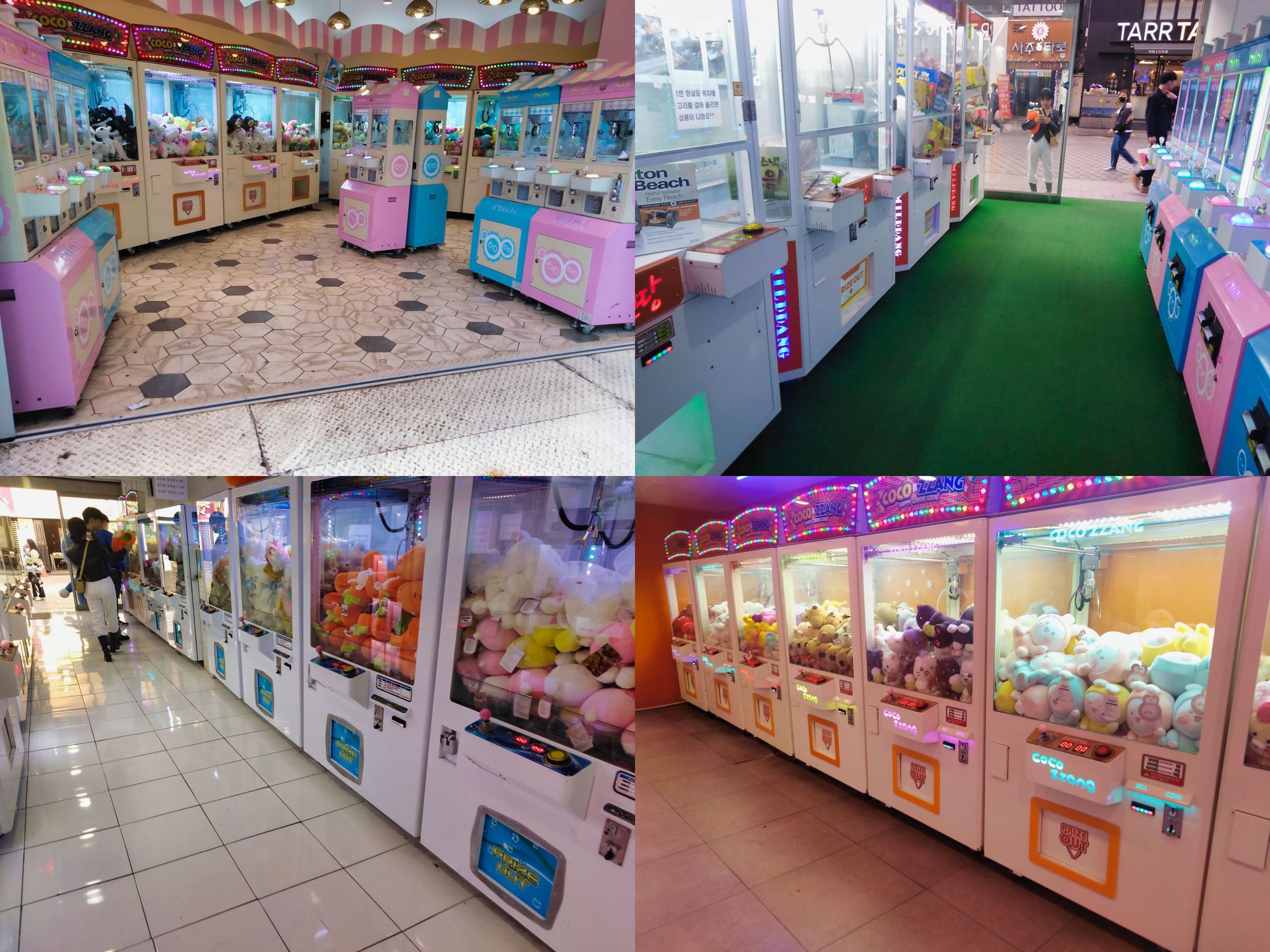
Crane game
While I wrote a little bit about the crane game in the article on Chinese arcades, I don't think I emphasized their importance enough. One thing I left out was the arcade that contains only crane games (and maybe some gacha machines) - usually a little pocket arcade in an unused nook in a mall or one of the shops ringing a shopping center. These highly specialized arcades exist in Korea as well, and in fact, there was at least a half-dozen in the Sky Bridge area.
There's a certain fiscal logic to this kind of business. A crane game-only arcade can fit comfortably in a tiny retail space that can't hold much else and the overhead is relatively low.
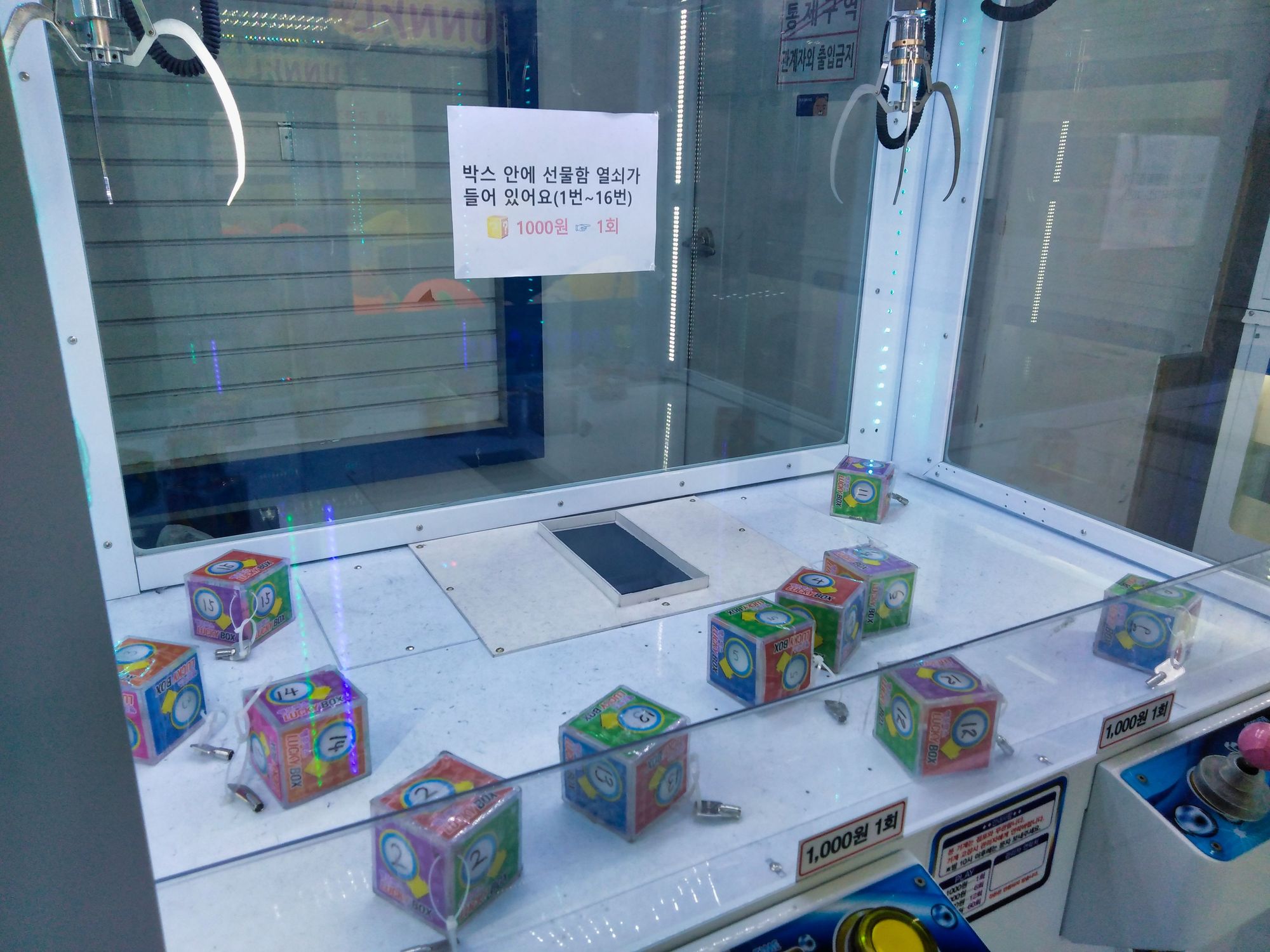
This particular machine is worth additional comment, as it combines two mainland Asian phenomena - the crane game and the "mystery box." Mystery boxes are dispensed by vending machines and contain a random prize, usually at least one of which is a high-value item or even cash. For this machine, the player attempts to grab a box containing a key, which then opens a drawer located to the right.
I'm a little bit surprised to see mystery boxes this late in the day. The entire concept is fairly controversial, being as it is a form of gambling marketed toward minors.

Consoles
Some of the smaller arcades feature something a little unexpected: Rows of consoles hooked up to TVs, ready to play. It's an odd thing to see, but aside from being another good use of space in a small arcade, it also makes sense in light of the culture. Like China, consoles are pretty rare in Korea - most estimates suggest that consoles make up about 5% of the Korean video game market, just slightly higher than the 2%-3% in China. In such an environment, a console (even one that's a little bit out of date) can still be a real draw.
Most of the consoles I saw were set up to play fighting games. This also makes the setup an easy, inexpensive way to get a recent version of Tekken or Street Fighter into an arcade.
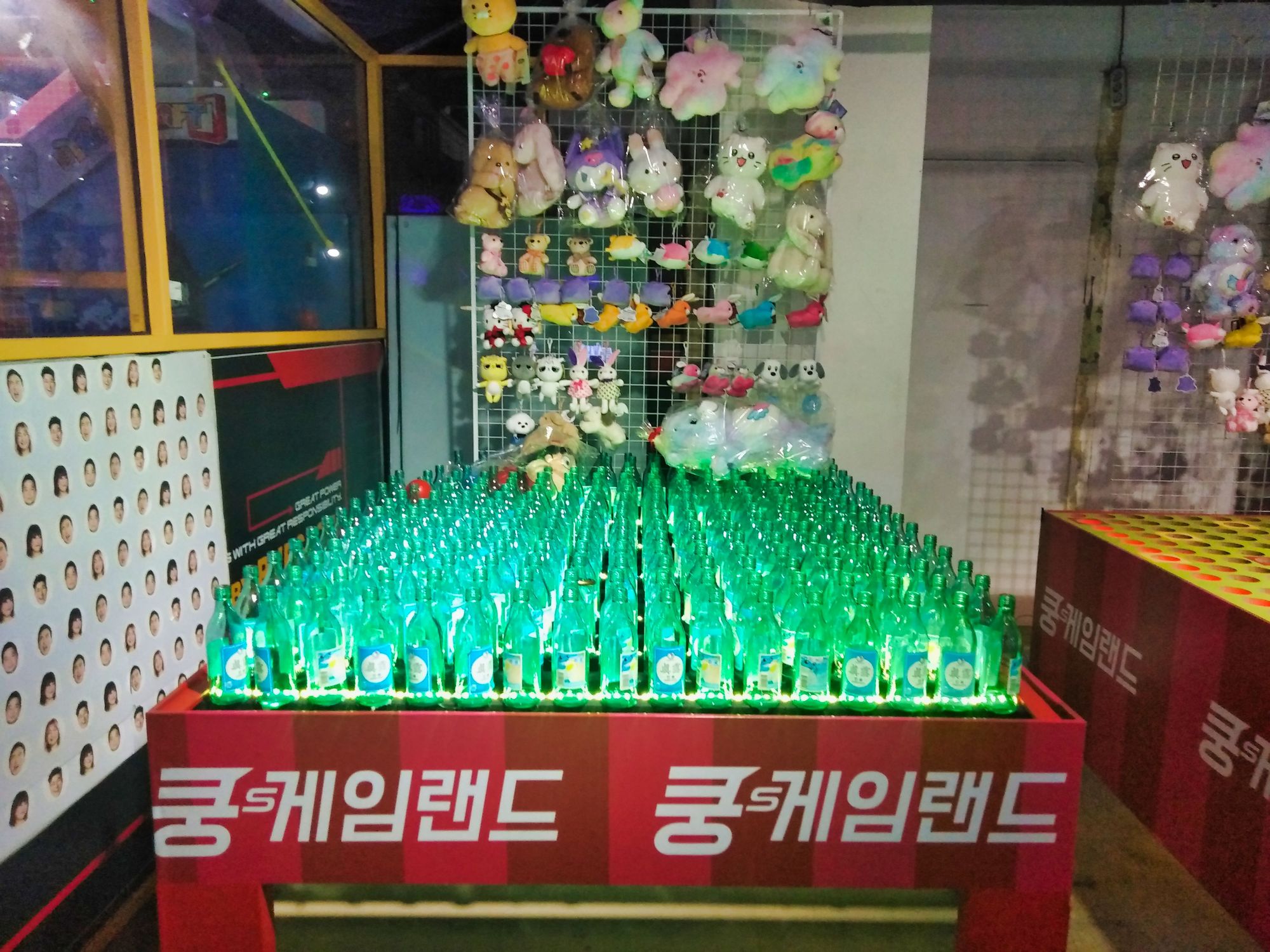
Ring toss
This one certainly isn't common, but I had to include it because it is real - there is actually an arcade in the Sky Bridge area that includes ring toss.
This was in the largest arcade I visited, a three-story entertainment center that included everything mentioned in this article and the previous article (including the VR roller coaster simulator that no one has the space for), plus twenty KTV rooms, five lanes of bowling and a full-sized roller rink. Even with all of that, they still had space for ring toss, pop the balloon, and a few other fairground classics.
As strange as this looks, I understand it. The logic here is exactly the same as it is for the room full of crane games located just steps away. Arcades are common date locations in mainland Asia, and as cheesy as it may seem from a distance, there is something undeniably romantic about winning a prize for your sweetheart.
And if that doesn't work? There's always air hockey.
